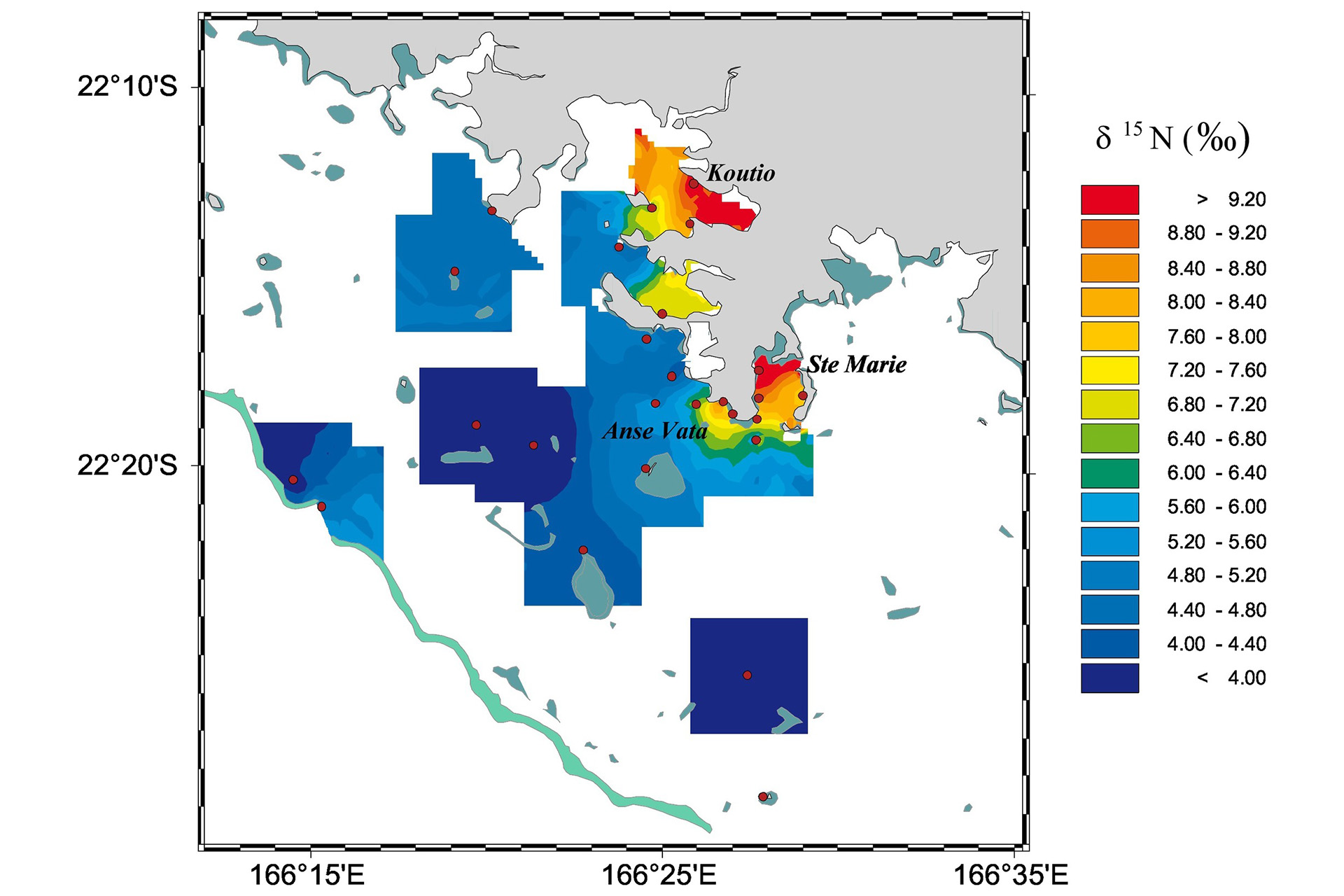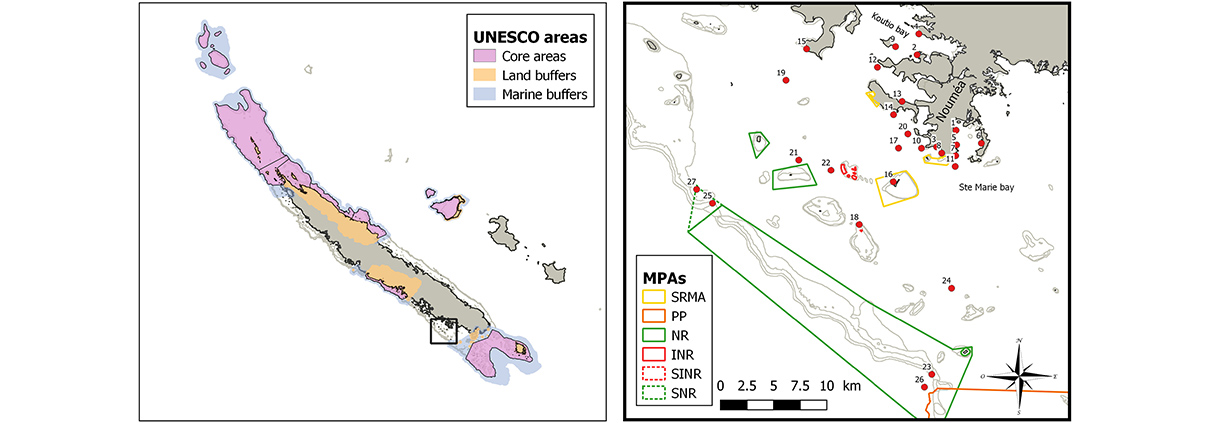Bivalve δ15N isoscapes provide a baseline for urban nitrogen footprint at the edge of a World Heritage coral reef
Abstract
Eutrophication is a major threat to world’s coral reefs. Here, we mapped the distribution of the anthropogenic nitrogen footprint around Nouméa, a coastal city surrounded by 15,743 km2 of UNESCO listed reefs. We measured the δ15N signature of 348 long-lived benthic bivalves from 12 species at 27 sites and interpolated these to generate a δ15N isoscape. We evaluated the influence of water residence times on nitrogen enrichment and predicted an eutrophication risk at the UNESCO core area. Nitrogen isoscapes revealed a strong spatial gradient (4.3 to 11.7‰) from the outer lagoon to three highly exposed bays of Nouméa. Several protected reefs would benefit from an improved management of wastewater outputs, while one bay in the UNESCO core area may suffer a high eutrophication risk in the future. Our study reinforces the usefulness of using benthic animals to characterize the anthropogenic N-footprint and provide a necessary baseline for both ecologists and policy makers.

Fig. 3. δ15N isoscape in 2012, estimated at 27 stations in the southwest lagoon of New Caledonia from muscle samples of 12 bivalve species.
Highlights
• Benthic filter-feeding bivalve communities are good bio monitors of spatial variations in anthropogenic-based eutrophication.
• The baseline δ15N value found in bivalves from the outer lagoon of New Caledonia was 4.7 ± 0.4‰.
• The δ15N signature of benthic bivalves reached 11.7‰ in the most exposed station.
• Isoscapes might be used both for long-term monitoring and to predict risks of at-sea anthropogenic pollution.
Reference
Thibault M., Duprey N., Gillikin D.P., Thébault J., Douillet P., Chauvaud L., Amice E., Munaron J.M., Lorrain A. 2020. Bivalve δ15N isoscapes provide a baseline for urban nitrogen footprint at the edge of a World Heritage coral reef. Marine Pollution Bulletin vol. 152. https://doi.org/10.1016/j.marpolbul.2019.110870





